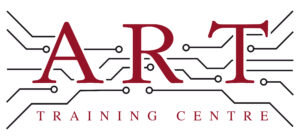Definition
Dry Joint is a fault that occurs in soldered connections in electronics, where the solder does not properly bond with the metal surfaces. This can happen due to insufficient heat, contamination, or improper soldering techniques. A dry joint can lead to intermittent connections or complete failure of the electronic device, making it crucial to identify and rectify during manufacturing or rework processes.
How It’s Used in the Industry
In electronics assembly, a dry joint can arise during the soldering process, particularly with printed circuit boards (PCBs). Technicians must ensure that the solder is heated adequately to create a good bond between components and the PCB. During inspection, both visual checks and techniques like X-ray or ultrasonic testing can help identify dry joints. For technicians in training, understanding how to prevent and fix dry joints is essential for ensuring device reliability. Experienced professionals also need to be vigilant, as dry joints can lead to costly product failures and warranty claims.
History & Origins
The issue of dry joints became prominent in the electronics industry as soldering technology evolved in the mid-20th century. With the rise of mass production and the development of standards like IPC (Institute for Printed Circuits), the need for reliable solder joints gained attention. As electronics became more complex, understanding and addressing dry joints became crucial for manufacturers to ensure product quality and reliability in increasingly compact designs.
Variations
There are several types of dry joints, including cold solder joints, where the solder does not melt properly, and those caused by thermal fatigue. Cold solder joints appear dull and grainy, while thermally fatigued joints may crack over time due to temperature changes. Both types can lead to similar issues but require different approaches for identification and repair. Understanding these variations helps technicians diagnose problems more effectively and apply appropriate solutions.
Modern Applications
Today, dry joints remain a significant concern in electronics production and repair, especially with surface mount and through-hole technologies. Their identification and prevention are vital for maintaining compliance with IPC standards, ensuring the quality and reliability of electronic devices. Training programmes now emphasise the importance of proper soldering techniques and inspection methods to mitigate the risks associated with dry joints, reflecting their ongoing relevance in the industry.
Practical Tips & Training
To prevent dry joints, ensure that the soldering iron is at the correct temperature and that surfaces are clean before soldering. Regular inspection using magnification tools can help detect dry joints early. Training and certification in soldering techniques are essential for technicians, as they provide foundational knowledge and skills to avoid common pitfalls like dry joints, ultimately enhancing product quality and reliability.


